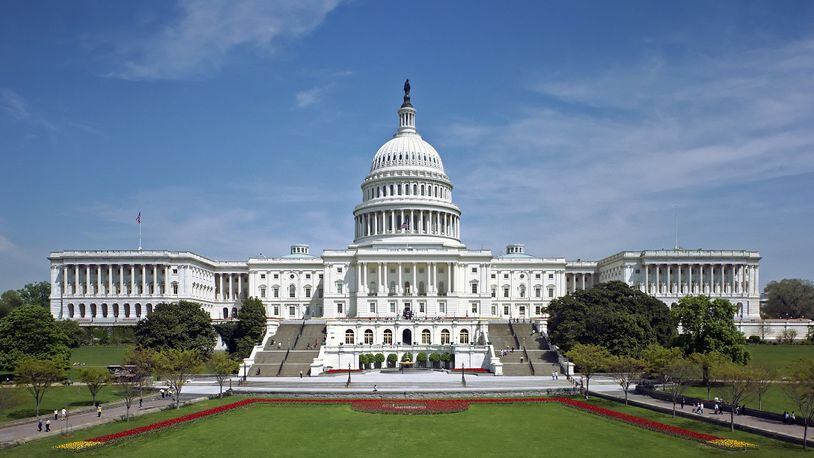Reformers favoring the groups’ proposal say the GOP plan mostly leaves the drawing of congressional lines in the hands of the majority party in the state legislature.
“Instead of making meaningful progress toward more representative elections, preventing drawing districts to favor a party or candidate, this proposal could leave toss-up swing-state Ohio with a congressional delegation even more skewed toward the majority,” Beth Taggart, interim executive director of the Ohio League of Women Voters, said in a news release.
Taggart said the coalition of groups that goes by the name Fair Districts = Fair Elections will continue collecting voter signatures to put its proposal on the November ballot. The group has more than 191,000 of the 305,591 signatures it needs.
RELATED: Reformers target political districts
Redistricting has been a hot issue nationally because representation in Congress in many states doesn’t appear to follow voting patterns. Ohio is known as a swing state in presidential elections, yet 75 percent of the state’s congressional delegation is Republican.
“Our proposal is based on limiting partisan gerrymandering and keeping communities together,” Taggart said. “The federal court’s ruling on Tuesday in the North Carolina gerrymandering case shows that congressional district lines that are rigged in favor of one party will not stand.”
A federal court on Tuesday ruled that Republicans in North Carolina unconstitutionally gerrymandered congressional districts in 2016.
Ohio Sen. Matt Huffman, R-Lima, who outlined the GOP reform proposal, defended it, saying it would enshrine in the Ohio Constitution minority party rights in the drawing of congressional districts. He said the coalition proposal is the one that would lead to the drawing of districts to favor a certain party.
The proposal from the Fair Districts = Fair Elections coalition is almost identical to State Issue 1, the constitutional amendment overwhelmingly approved by Ohio voters in 2015 that reformed the way state legislative lines are drawn. It set up an expanded Redistricting Commission that gave the minority party more power, and included rules discouraging partisanship and requiring compact, competitive districts and a transparent redistricting process.
RELATED: Ohio may change the way congressional lines are drawn
District lines are redrawn every 10 years to reflect population shifts after the decennial census. Ohio’s drop in population cost it two seats in the 2011 redistricting, and it could lose another seat in 2021 if current population patterns hold.
The GOP proposal outlined Wednesday would initially leave redistricting in the hands of the state legislature, as it is now. Approval of a new district map would require a three-fifths vote in each chamber and the support of one-third of the minority party, according to the proposal.
If the legislature was unable to come up with a new district map it would go to a seven-member Redistricting Commission like the one included in the 2015 reform. Approval of the map would require four of seven votes, including two from the minority party. Without that minority support, a majority of the seven could produce a map that would only be good for four years.
The third step in the GOP plan would let the state legislature try to turn that map into a 10 year map with a majority vote, including one-fifth of the minority party.
The proposal also requires that each county, other than the 10 most populous counties, cannot be split more than once.
Huffman is one of four members of a bipartisan working group formed by Republican legislative leaders to propose a congressional district reform ballot issue for the May 8 primary election. His proposal begins the legislative process, which must be done by Feb. 7 for the amendment to get on the May ballot. Huffman said he expects to introduce legislation within the next week or so.
RELATED: Kasich backs redistricting reform
Although the working group includes two Democrats, they were not a part of the proposal Huffman unveiled before two legislative committees Wednesday, said Jordan Plottner, spokesman for the Ohio House Democratic Caucus.
Those Democrats, State Rep. Jack Cera, D-Bellaire, and state Sen. Vernon Sykes, D-Akron, issued a joint statement saying they wanted to “end partisan gerrymandering” with reform that will make districts that “are fair and truly representative of Ohioans.”
“Unfortunately, the plan that Senator Huffman and Representative (Kirk) Schuring (R-Canton) presented today doesn’t achieve that,” the statement said. “In fact, in some ways, it is worse than our current system, as it eliminates the governor’s veto power and removes the citizen referendum from the legislative process.”
The two said they hope to continue good faith discussions to create a bipartisan plan.
Federal law requires that districts be as equal in population as possible, that its parts be contiguous and that the district lines not dilute minority voting strength. But there is no law against packing a district with members of a single political party or dividing up a certain party’s members to dilute their power. Over the year’s both Democrats and Republicans have done both when they are in the majority.
California, Arizona and Iowa are among the states using a less partisan process that does not give legislators direct control of redistricting.
The U.S. Supreme Court is expected to rule this year on two cases addressing alleged partisan gerrymandering, one involving Republicans in Wisconsin state legislative districts and one involving Democrats in Maryland congressional districts.
RELATED: Supreme Court takes on case that could change congressional elections
Other stories by Lynn Hulsey
Mike Gibbons says he will beat Sherrod Brown, puts $5M in Senate race
Ohioans who lose driver’s license get help from lawmakers
Concealed handguns allowed in more places
About the Author
